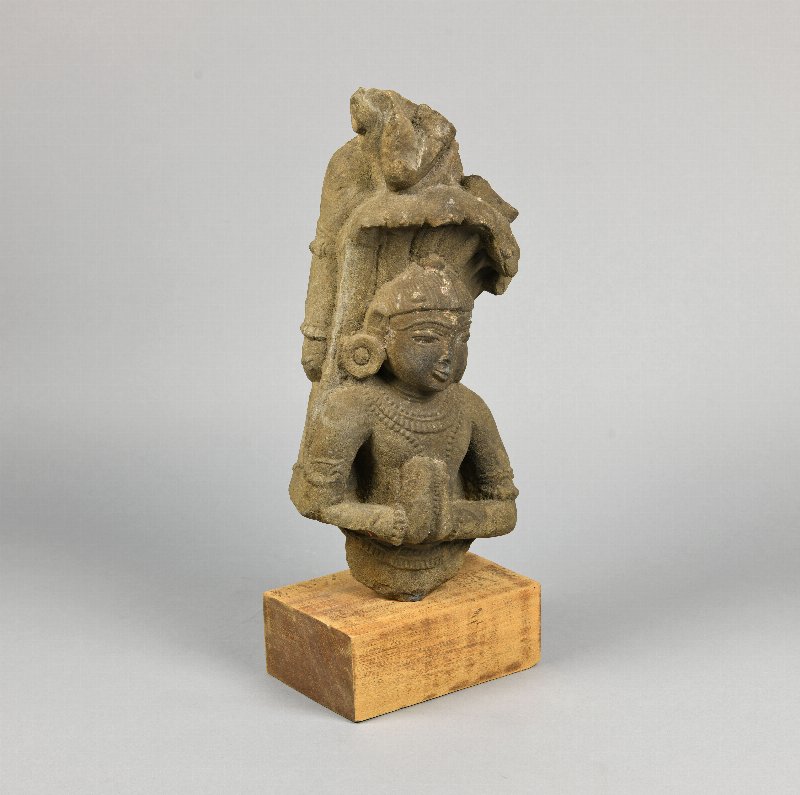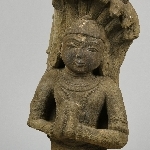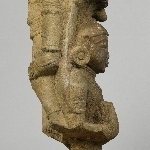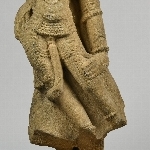| Object Number | 30-20-1 |
| Current Location | Collections Storage |
| Culture | Indian | Jain |
| Provenience | India | Mahoba |
| Date Made | 10th Century - 12th Century |
| Section | Asian |
| Materials | Sandstone |
| Iconography | Naga (Snake) |
| Description | This small fragment was found in 1930 among the ruins of a group of 10th to 11th century temples at Mahoba in north India. This piece may be a Jain Naga because it lay near a broken Jina. Its current state of preservation makes it impossible to determine its original context. It may have been part of a large image or the sculptural decoration of a temple wall. It shows on its one side the figure of a naga or snake god who rises with hands clasped in adoration (anjali), and on the other the fragmented torso of a female figure. The naga is represented as having a human face and torso with the lower extremities retaining a serpentine character, and is most easily recognized by his many-headed snake hood. Serpent worship is very ancient in India, where, like snakes, serpent deities are believed to inhabit the rivers and trees. Shrines to them are very common to this day. Like other folk deities, snake gods were gradually incorporated into the pantheons of the various religions of India. Visually, this process entailed the depiction of nagas and other folk deities in subsidiary roles to the main cult deities or as decorative images on the walls of temples. |
| Height | 36.5 cm |
| Width | 19 cm |
| Thickness | 15.5 cm |
| Credit Line | Purchased from W. Norman Brown, 1930 |
| Other Number | 1 - Other Number |
Report problems and issues to digitalmedia@pennmuseum.org.






